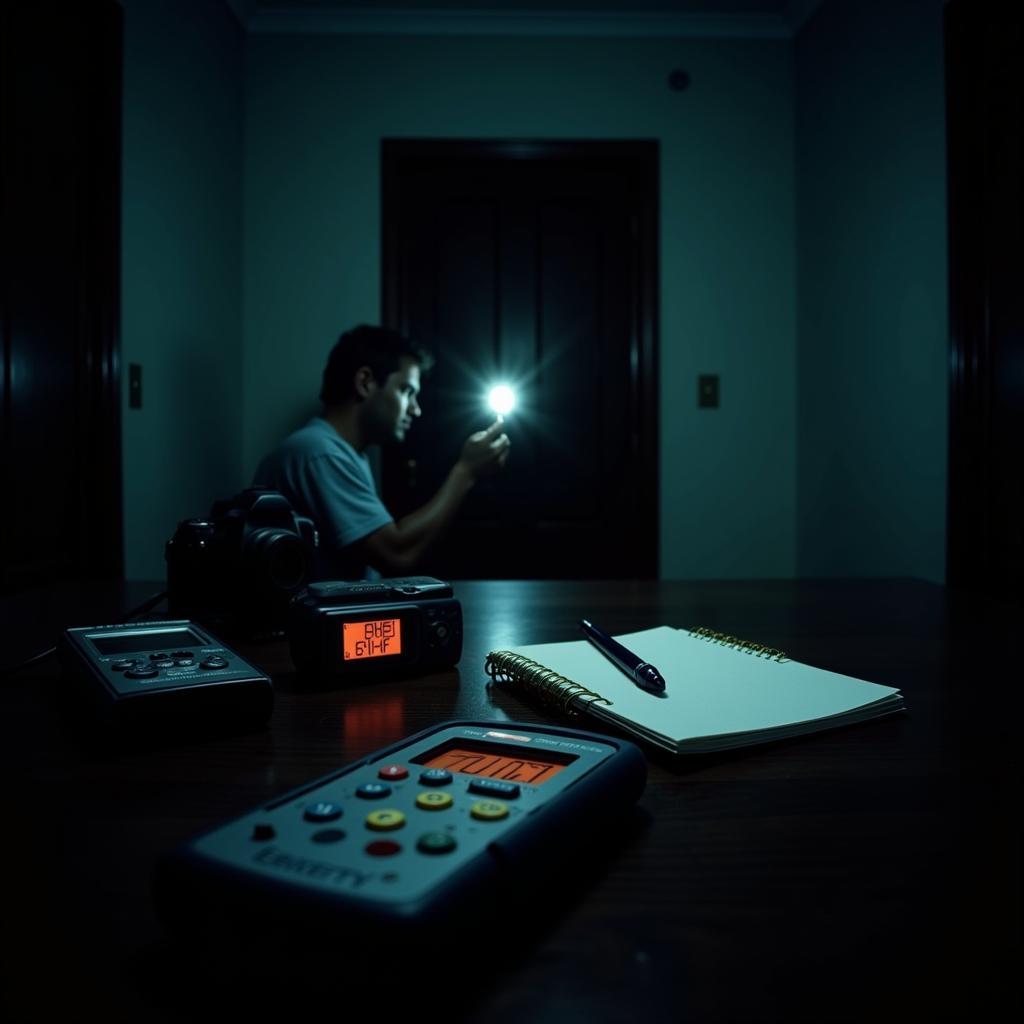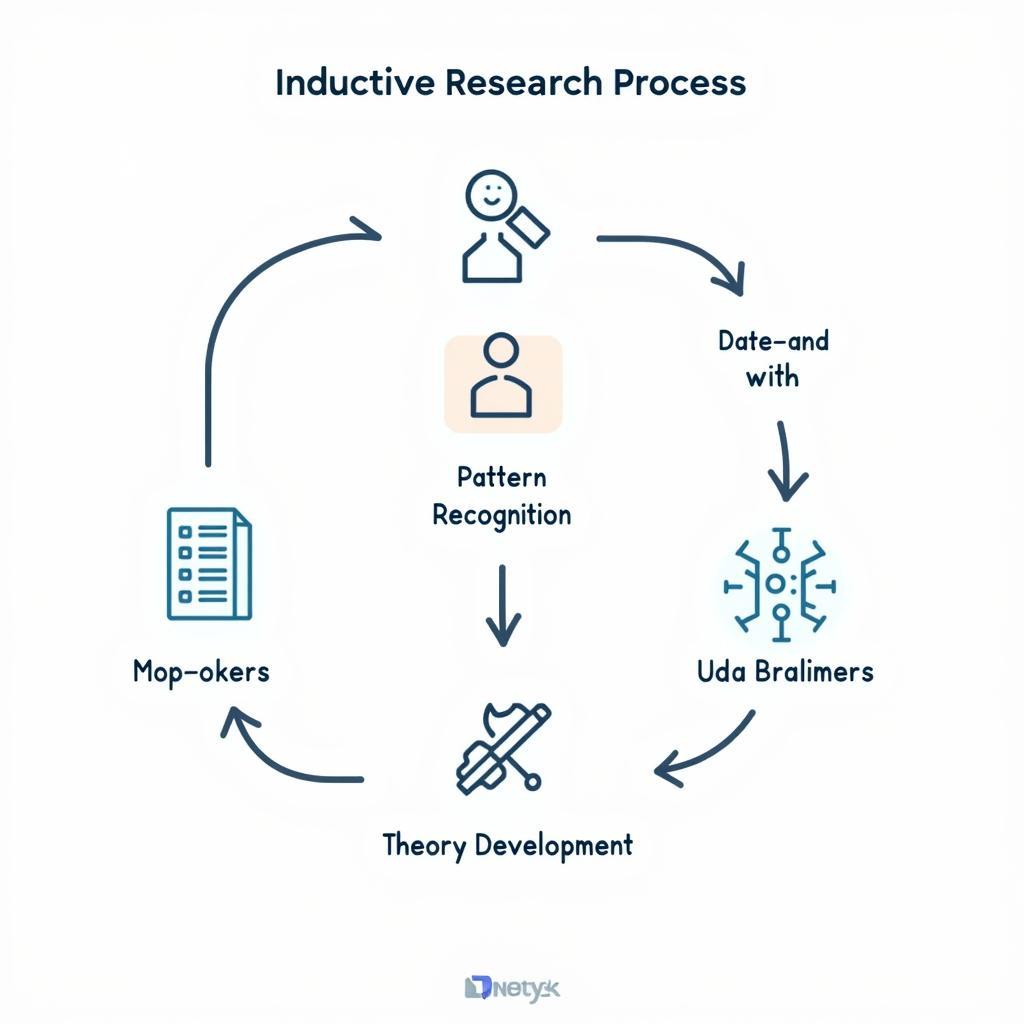The Inductive Research Approach offers a powerful lens through which to examine the often-elusive world of paranormal phenomena. By starting with specific observations and building towards broader theories, this method allows researchers to explore unexplained events with an open mind and a data-driven approach. This article delves into the application of the inductive research approach within paranormal investigations, examining its strengths, limitations, and practical applications. research inductive approach
What is the Inductive Research Approach?
The inductive research approach begins with specific observations and data collection. Unlike deductive reasoning, which starts with a hypothesis and then seeks evidence to support it, induction builds theories from the ground up. This makes it particularly well-suited for exploring phenomena where existing knowledge is limited or where established theories may not adequately explain the observed events.
Gathering Evidence: The First Step in Inductive Paranormal Research
The initial phase of inductive research in the paranormal involves meticulous data collection. This can include eyewitness accounts, audio and video recordings, environmental readings, and even historical records. The goal is to gather a rich and diverse dataset that captures the nuances of the phenomena under investigation.
 Gathering Evidence in Paranormal Research
Gathering Evidence in Paranormal Research
Analyzing Data: Finding Patterns in the Paranormal
Once a sufficient amount of data has been collected, the next step is to analyze it for patterns and recurring themes. This process, often called coding, involves identifying key concepts and categorizing the data accordingly. This is where the inductive process truly shines, allowing researchers to draw connections and develop preliminary hypotheses based on the observed data. example of coding in qualitative research
How Does Inductive Research Apply to Paranormal Investigations?
Consider a haunted location. Instead of starting with the assumption that it is haunted, an inductive approach would involve gathering evidence of unusual occurrences – strange noises, temperature fluctuations, apparitions – and then analyzing this data for patterns. Perhaps certain phenomena cluster around specific areas or times of day. These patterns can then form the basis for hypotheses about the nature of the haunting.
Challenges and Limitations of Inductive Research in the Paranormal
While powerful, the inductive research approach also faces unique challenges in the paranormal field. The subjective nature of many paranormal experiences, the difficulty of replicating phenomena, and the potential for bias can all complicate the research process.
 Challenges in Inductive Paranormal Research
Challenges in Inductive Paranormal Research
“Inductive reasoning requires rigorous documentation and a willingness to re-evaluate initial interpretations as new data emerges,” says Dr. Evelyn Reed, a prominent researcher in anomalous phenomena. “It’s about building a case, piece by piece, based on observable evidence.”
Inductive Research vs. Deductive Research in Paranormal Investigations
The inductive approach stands in contrast to the deductive approach, which begins with a hypothesis and seeks to confirm or refute it through observation. While both methods have their place, the inductive approach is often more appropriate in the early stages of investigating a paranormal phenomenon. which of the following is true of qualitative research
Building Theories from the Ground Up: The Power of Induction
The strength of inductive research lies in its ability to generate new theories and insights. By embracing uncertainty and allowing the data to lead the way, researchers can uncover unexpected connections and deepen our understanding of the paranormal. qualitative research theories
 Building Theories through Inductive Paranormal Research
Building Theories through Inductive Paranormal Research
“The most exciting discoveries often arise from unexpected findings,” adds Dr. Reed. “Inductive research provides a framework for embracing those surprises and turning them into meaningful insights.”
Conclusion
The inductive research approach offers a valuable framework for exploring the complexities of the paranormal. By focusing on meticulous data collection, rigorous analysis, and a willingness to adapt to new evidence, researchers can unlock new understandings and shed light on some of the most enduring mysteries of our world. Applying the inductive research approach to paranormal investigations can lead to more nuanced and data-driven interpretations of these enigmatic phenomena. coding in research
Need help with your Paranormal Research? Contact us at 0904826292, research@gmail.com or visit us at No. 31, Alley 142/7, P. Phú Viên, Bồ Đề, Long Biên, Hà Nội, Việt Nam. We have a 24/7 customer support team.